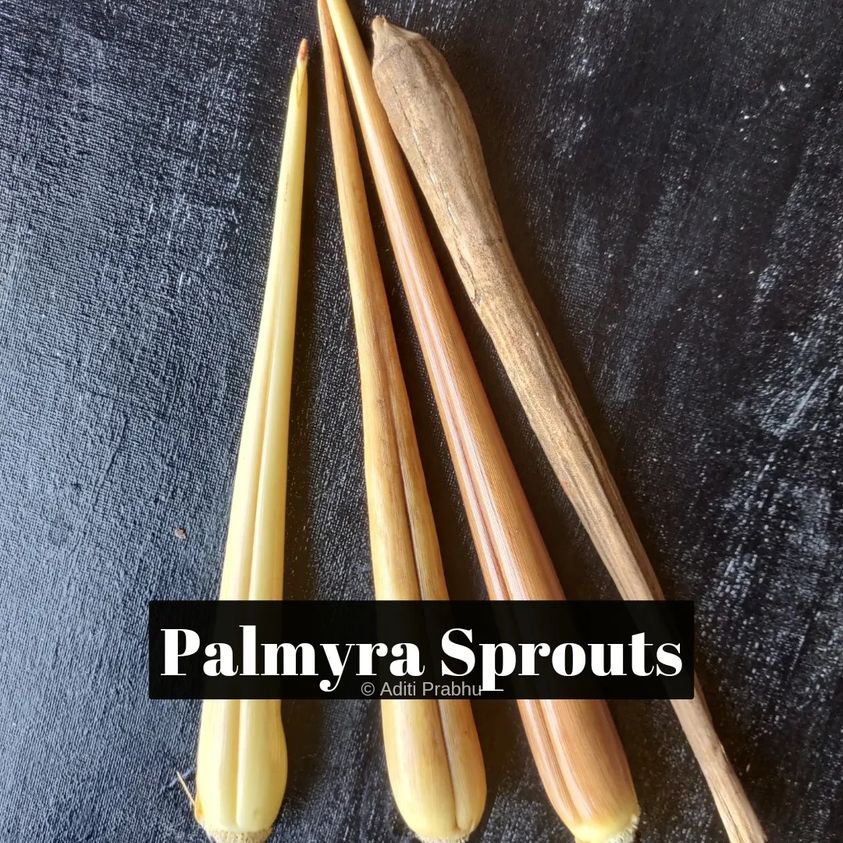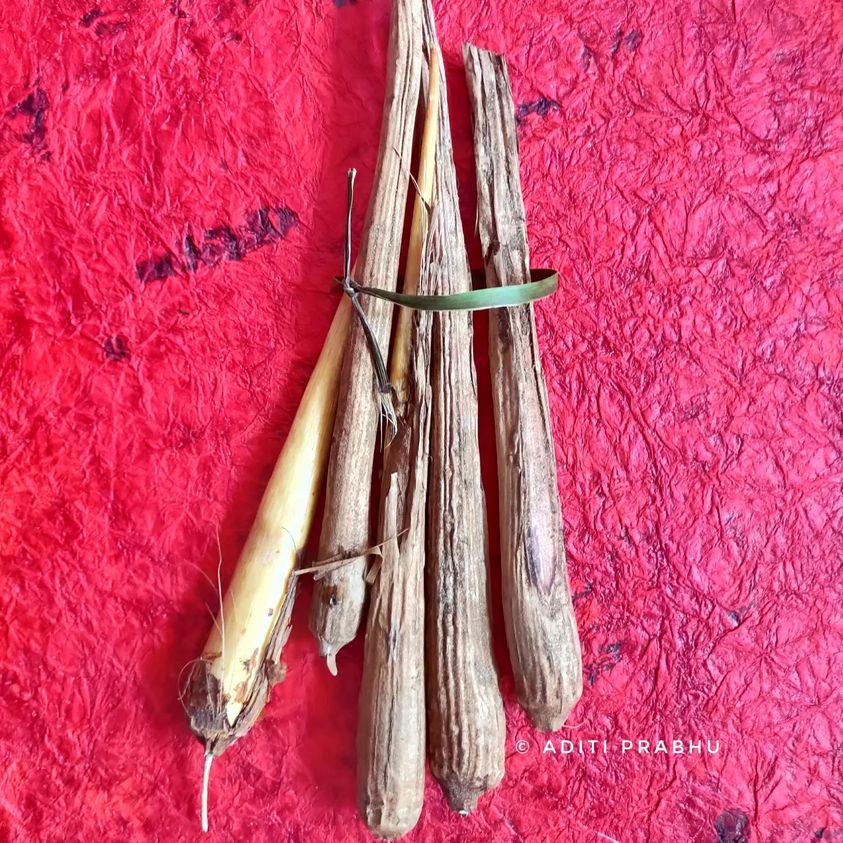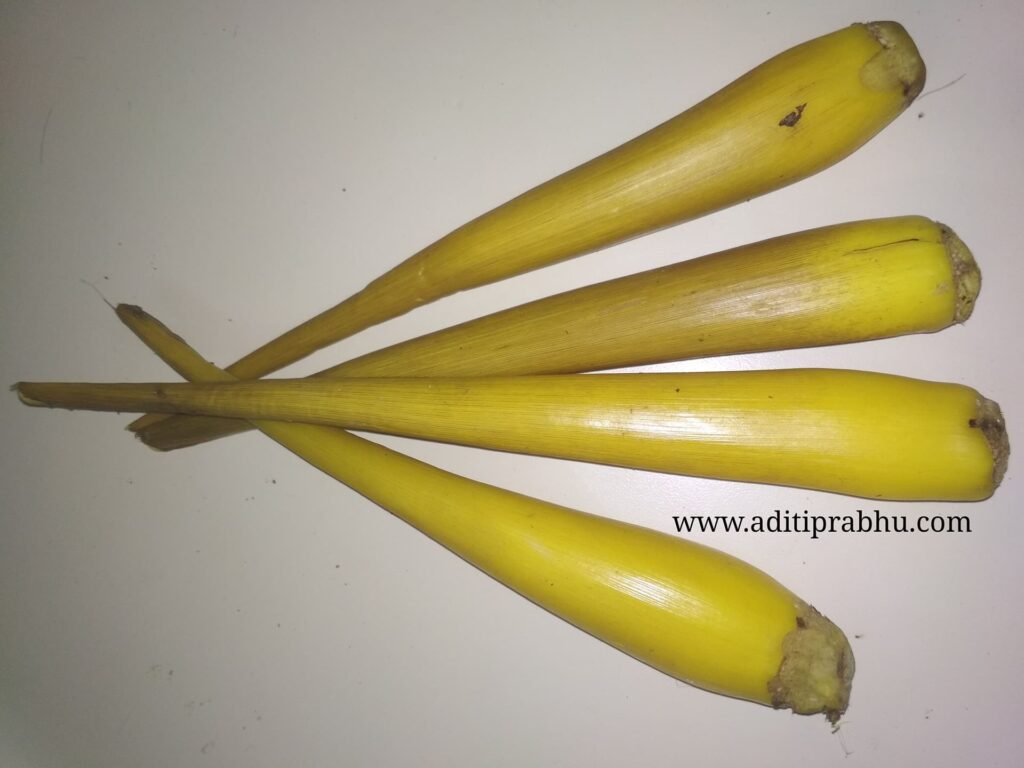When it comes to vegetables and fruits, I love buying them fresh from local farmers. Most of them know that apart from buying the usual I also love exploring and trying out new/local vegetables and fruits. So one of the ladies who is also a local farmer got me a strange yellow-looking food- The Palmyra Sprout and asked me to peel it before I eat. She mentioned it came from the same plant from which Tadgola / ice apples are obtained. On further probing and a little bit of research, here is what I found about this gorgeous beauty.
About the Palmyra Sprout:
This is Palmyra Sprout obtained from Palmyra palm or the toddy palm or Borassus Flabellifer. The Palmyra palm trees are quite similar to the coconut tree in looks but are comparatively shorter in height and have fan-shaped leaves with pointed tips. Quite similar to the Coconut tree even the Palmyra palm can be called a “Kalpvrisksha or miracle tree” since all the parts of the tree are used.
The Palmyra Palm is mainly found in the regions of Tamil Nadu, Andhra Pradesh, Bihar, and Orissa. It’s also cultivated in some parts of Palghar (Mumbai) that’s exactly where I got it from.
It is called Panai Kizhangu or Panam Kizhangu in Tamil, Thegalu or Gengulu in Telegu.
Cultivation of Palmyra Sprout:
A shallow pit is dug, and the palm seed is placed close to each other and is watered regularly. Within a month or more, it germinates. The pit is then dug up to remove the Palmyra sprouts. The sprout is separated put, and both the roots and tip are chopped off. Then it is peeled to remove the outer covering.
Consumption of Palmyra Sprout:
The Palmyra sprout is either roasted on fire or boiled on the farm itself in earthen pots. It can be consumed directly as a snack post-roasting or boiling.
You also get the flour which is produced by drying and powdering the sprouts. I’ve also heard that there are various recipes made out of it. Waiting to try out those.
Taste and Texture:
I haven’t tasted the roasted version. But as per the lady farmer, it tastes great, and smells even better. The boiled ones are pretty bland to taste except for their subtle woody taste and highly fibrous texture. It tastes even better when it’s freshly boiled and served. The colder it gets, it loses its charm (that’s my personal opinion though)
Also, the Palmyra sprout is high in fibre and low in GI.
Have you tried the Palmyra Sprout? Do share your views about it. Also if you know of any interesting recipes made with it, do share them with me. I would be glad to try it out.
Reference:
- https://www.academicjournals.org/article/article1380708373_Ali%20et%20al.pdf
- https://www.omicsonline.org/open-access/physicochemical-properties-of-palmyrah-fruit-pulp-borassus-flabellifer-l-2155-9600-1000391.pdf
- https://www.ncbi.nlm.nih.gov/pmc/articles/PMC3981995/https://www.journalcra.com/sites/default/files/23682.pdf



i have eaten this today , but we call it (tarpan) in bihar. it was yummy
Thank you for sharing this. I wasn’t aware
I have eaten it.. as it called tarpan(तारपन) in nawada district (bihar)… It tastes like bolied fresh corn mixed with earthy flavor… It has little bit of hard texture and and it first seems like some wood😂😂.. I love it 🤤🤤
Oh, that’s so fascinating. Thank you for sharing this bit.
Hello vanakkam. I am k. Thangapandian from chennimalai-638051 erode district. Very good recipes thanks. Available Palmyra root powtar. Panaikilaku floar.my what s appno. 9715880630
Thank you, for Sharing this extremely informative article…
🙂
Lovely read,this is the second new food you introduced to me,Delhi has all imported ones 😉 many you can easily find while surfing,but what you introduce,is native,not available easily while surfing net….in love…keep writing
Thank you for the compliment. Glad you liked it.Stay tuned for more interesting blogs that are coming up.